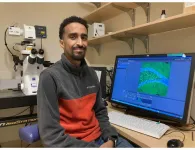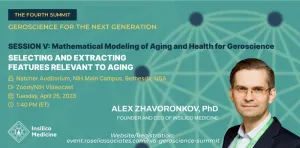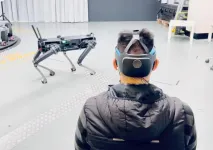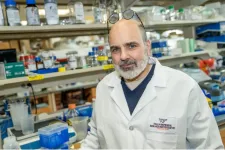Using artificial intelligence to design innovative materials
Max Planck scientists explore the possibilities of artificial intelligence in materials science and publish their review in the journal Nature Computational Science
2023-04-03
(Press-News.org)
Advanced materials are urgently needed for everyday life, be it in high technology, mobility, infrastructure, green energy or medicine. However, traditional ways of discovering and exploring new materials encounter limits due to the complexity of chemical compositions, structures and targeted properties. Moreover, new materials should not only enable novel applications, but also include sustainable ways of producing, using and recycling them. Researchers from the Max-Planck-Institut für Eisenforschung (MPIE) review the status of physics-based modelling and discuss how combining these approaches with artificial intelligence can open so far untapped spaces for the design of complex materials. They published their perspective in the journal Nature Computational Science.
Combining physics-based approaches with artificial intelligence
To meet the demands of technological and environmental challenges, ever more demanding and multifold material properties have to be considered, thus making alloys more complex in terms of composition, synthesis, processing and recycling. Changes in these parameters entail changes in their microstructure, which directly impacts materials properties. This complexity needs to be understood to enable predicting structures and properties of materials. Computational materials design approaches play a crucial role here. “Our means of designing new materials rely today exclusively on physics-based simulations and experiments. This approach can experience certain limits when it comes to the quantitative prediction of high-dimensional phase equilibria and particularly to the resulting non-equilibrium microstructures and properties. Moreover, many microstructure- and property-related models use simplified approximations and rely on a large number of variables. However, the question remains if and how these degrees of freedom are still capable of covering the material’s complexity”, explains Professor Dierk Raabe, director at MPIE and first author of the publication. The paper compares physics-based simulations, like molecular dynamics and ab initio simulations with descriptor-based modelling and advanced artificial intelligence approaches. While physics-based simulations are often too costly to predict materials with complex compositions, the use of artificial intelligence (AI) has several advantages. “AI is capable of automatically extracting thermodynamic and microstructural features from large data sets obtained from electronic, atomistic and continuum simulations with high predictive power”, says Professor Jörg Neugebauer, director at MPIE and co-author of the publication.
Enhancing machine learning with large data sets
As the predictive power of artificial intelligence depends on the availability of large data sets, ways of overcoming this obstacle are needed. One possibility is to use active learning cycles, where machine learning models are trained with initially small subsets of labelled data. The model’s predictions are then screened by a labelling unit that feeds high quality data back into the pool of labelled records and the machine learning model is run again. This step-by-step approach leads to a final high-quality data set usable for accurate predictions.
There are still many open questions for the use of artificial intelligence in materials science: how to handle sparse and noisy data? How to consider interesting outliers or ‘misfits’? How to implement unwanted elemental intrusion from synthesis or recycling? However, when it comes to designing compositionally complex alloys, artificial intelligence will play a more important role in the near future, especially with the development of algorithms, and the availability of high-quality material datasets and high-performance computing resources.
The research is supported by the BigMax network of the Max Planck Society.
END
[Attachments] See images for this press release:
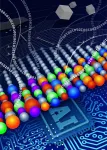
ELSE PRESS RELEASES FROM THIS DATE:
2023-04-03
New research at the University of Massachusetts Amherst zeroes in on the root cause of adverse health effects from disruption of the body’s circadian rhythms, which typically occurs from jet lag and rotating work shifts.
The research, published in the journal eNeuro, also shows that the circadian clock gene Cryptochrome 1 (Cry 1) regulates adult neurogenesis – the ongoing formation of neurons in the brain’s hippocampus. Adult neurogenesis supports learning and memory, and its disruption has been linked to dementia and mental illness.
“Circadian disruption impacts a lot of things,” says lead author Michael Seifu Bahiru, a Ph.D. candidate in the ...
2023-04-03
Insilico Medicine founder and CEO Alex Zhavoronkov, PhD, a pioneer in generative AI for drug discovery and in uncovering dual pathways for aging and disease, will present at The Fourth Summit: Geroscience for the Next Generation organized by the Geroscience Interest Group of the National Institutes of Health (NIH) and the U.S. Department of Health and Human Services, happening April 24-26 at the NIH Main Campus in Bethesda, Maryland. Zhavoronkov will speak April 25, 1:40pm ET as part of the session on Mathematical Modeling of Aging and Health for Geroscience on “Selecting and Extracting Features Relevant to ...
2023-04-03
It sounds like something from science fiction: Don a specialized, electronic headband and control a robot using your mind. But now, recent research published in ACS Applied Nano Materials has taken a step toward making this a reality. By designing a special, 3D-patterned structure that doesn’t rely on sticky conductive gels, the team has created “dry” sensors that can measure the brain’s electrical activity, even amidst hair and the bumps and curves of the head.
Physicians monitor electrical signals ...
2023-04-03
Older adults perceive artificial intelligence as more human-like than younger adults do
Toronto, April 3, 2023 – Artificial intelligence (AI) is increasingly present in all of our lives, from newer offerings like ChatGPT to more established voice systems such as automated phone services, self-checkouts, Apple’s Siri and Amazon’s Alexa. While these technologies largely benefit us, they can also be used in adverse ways – for instance, in fraudulent or scam calls – making it important for us to be able to identify them.
According to a recent Baycrest study, older adults appear to be less able to distinguish ...
2023-04-03
SPOKANE, Wash. – An online “e-health” program helped more people with chronic pain reduce their opioid medications and pain intensity than a control group that had only regular treatment in a recent clinical study.
In the study published in the journal Pain, about 400 participants who had been prescribed long-term opioid treatment for their pain were divided into two groups: one received treatment as usual and another received treatment and access to a self-guided, e-health program. Of the e-health group, more than half, 53.6%, were able to reduce their ...
2023-04-03
Researchers have succeeded for the first time in adding a highly purified form of curcumin to yogurt in a way that ensures it remains dissolved in the dairy product and preserves it, while tasting good.
Their discovery, which is published today (Monday) in Frontiers in Nutrition, makes it possible to create a probiotic yogurt that contains no artificial preservatives but that still has a long shelf life and properties that may enhance good health.
Curcumin is a naturally-occurring chemical that provides the yellow colour in turmeric. Studies have shown that it has anti-inflammatory and anti-oxidative properties, that it can inhibit the growth ...
2023-04-03
A linguistic bias in the English language that leads us to ‘improve’ things by adding to them, rather than taking away, is so common that it is even ingrained in AI chatbots, a new study reveals.
Language related to the concept of ‘improvement’ is more closely aligned with addition, rather than subtraction. This can lead us to make decisions which can overcomplicate things we are trying to make better.
The study is published today (Monday 3rd April) in Cognitive Science, by an international ...
2023-04-03
Government-assisted refugees were less likely to receive adequate prenatal care than privately sponsored refugees, found a new study published in CMAJ (Canadian Medical Association Journal) https://www.cmaj.ca/lookup/doi/10.1503/cmaj.221207.
Canada has 2 main pathways to resettle refugees: government assistance and private sponsorship by family members or non-family volunteers.
To determine whether refugees receive adequate prenatal care (defined as initiation of prenatal care by 13 weeks' gestation; receipt of a minimum number of prenatal care visits, as recommended by the Society of Obstetricians and Gynaecologists of Canada; and receipt of a prenatal fetal anatomy ultrasound ...
2023-04-03
The quality and integrity of peer review in Higher Education research has been put firmly in the spotlight by the European Journal of Higher Education (EJHE), published by Taylor & Francis. All articles submitted from April 2023 will, if accepted, have their reviewer reports published at the same time, as part of a one-year pilot.
The EJHE peer review process itself will remain the same, with reports on manuscripts under consideration received from two or three referees before an editorial decision is made. ...
2023-04-03
The human brain begins to assemble itself shortly after conception as a growing number of brain cells connect to create circuits across the brain.
Genes provide the blueprint for construction, but occasionally the blueprint is incomplete, connections aren’t made, and circuits fail — sometimes long before the problem can be recognized, let alone fixed.
That’s the case with DiGeorge syndrome, also called 22q11.2 deletion syndrome, a genetic disorder affecting about one in 3,000 babies. It begins with a deletion of one of two copies of a small number of genes on human chromosome 22, whose cascading effects include cardiovascular problems, craniofacial ...
LAST 30 PRESS RELEASES:
[Press-News.org] Using artificial intelligence to design innovative materials
Max Planck scientists explore the possibilities of artificial intelligence in materials science and publish their review in the journal Nature Computational Science

